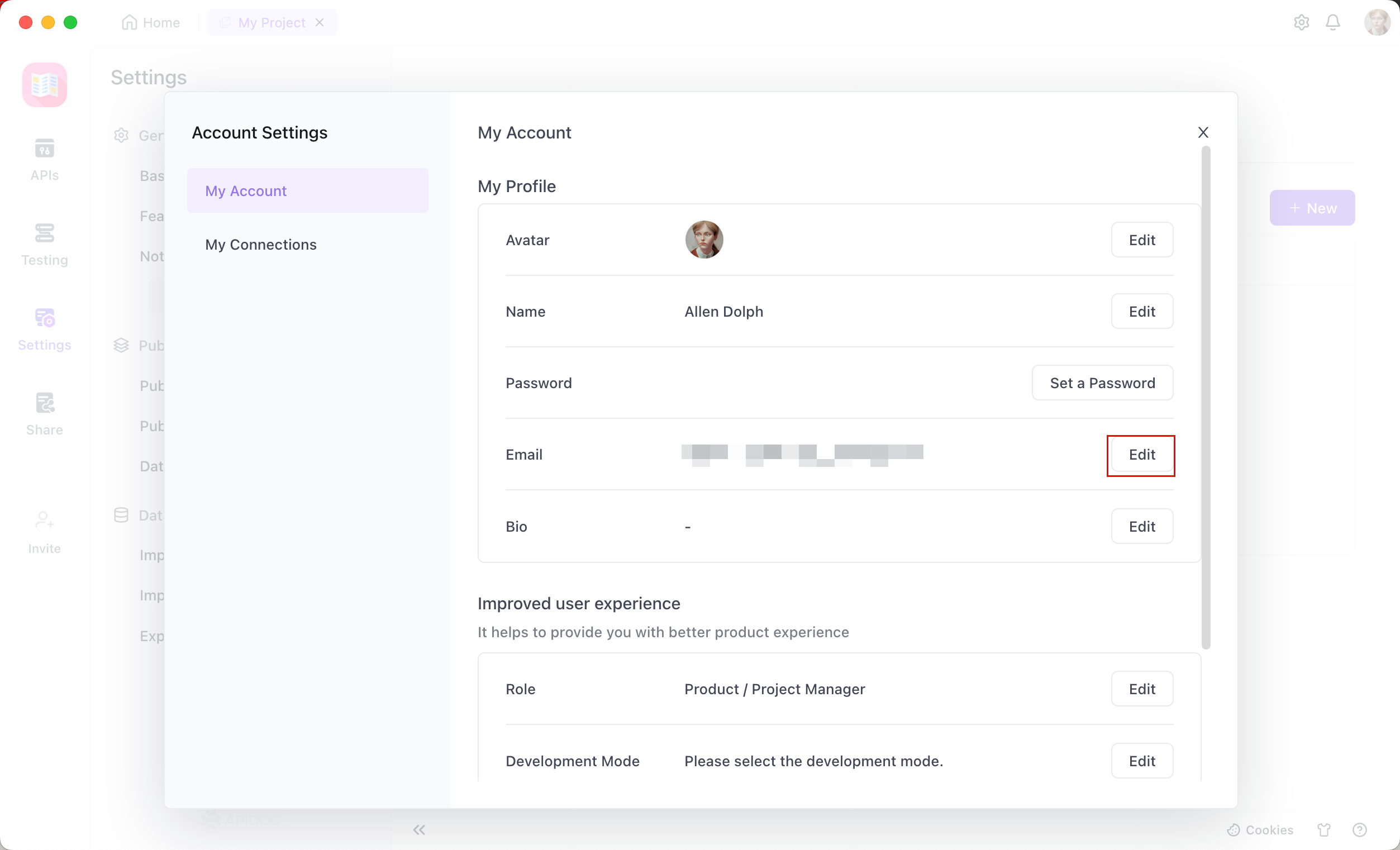At Apicat, you have the ability to manage and personalize your personal information directly from your account settings.Password Settings#
1.
Click your avatar in the upper right corner and select "Account Settings". 2.
On the Account Settings page, navigate to the "Set a Password" section and click on it. 3.
Enter your new password, confirm it, and then click on "Save" to successfully set your login password. Changing Username#
1.
Go to the account settings page and click "Edit" in the "Name" section. 2.
Type your desired new username, click on "Confirm", and your username will be updated.
Email Binding#
On the account settings page, locate the "Email" section.My Connections#
Link your Apicat account with third-party accounts if you signed up using an email.1.
From the Account Settings page, select the "My Connections" section. 2.
Here, you can link your account with platforms like GitHub and Google.
Deleting Account#
1.
Navigate to "Delete Account" in the account settings page. 2.
Clicking "Log Out" will prompt for identity verification. After verification, click "Confirm" to proceed with account deletion.
Before deleting your account, ensure that you log out and disband any teams. Once deleted, the account will become inaccessible.













